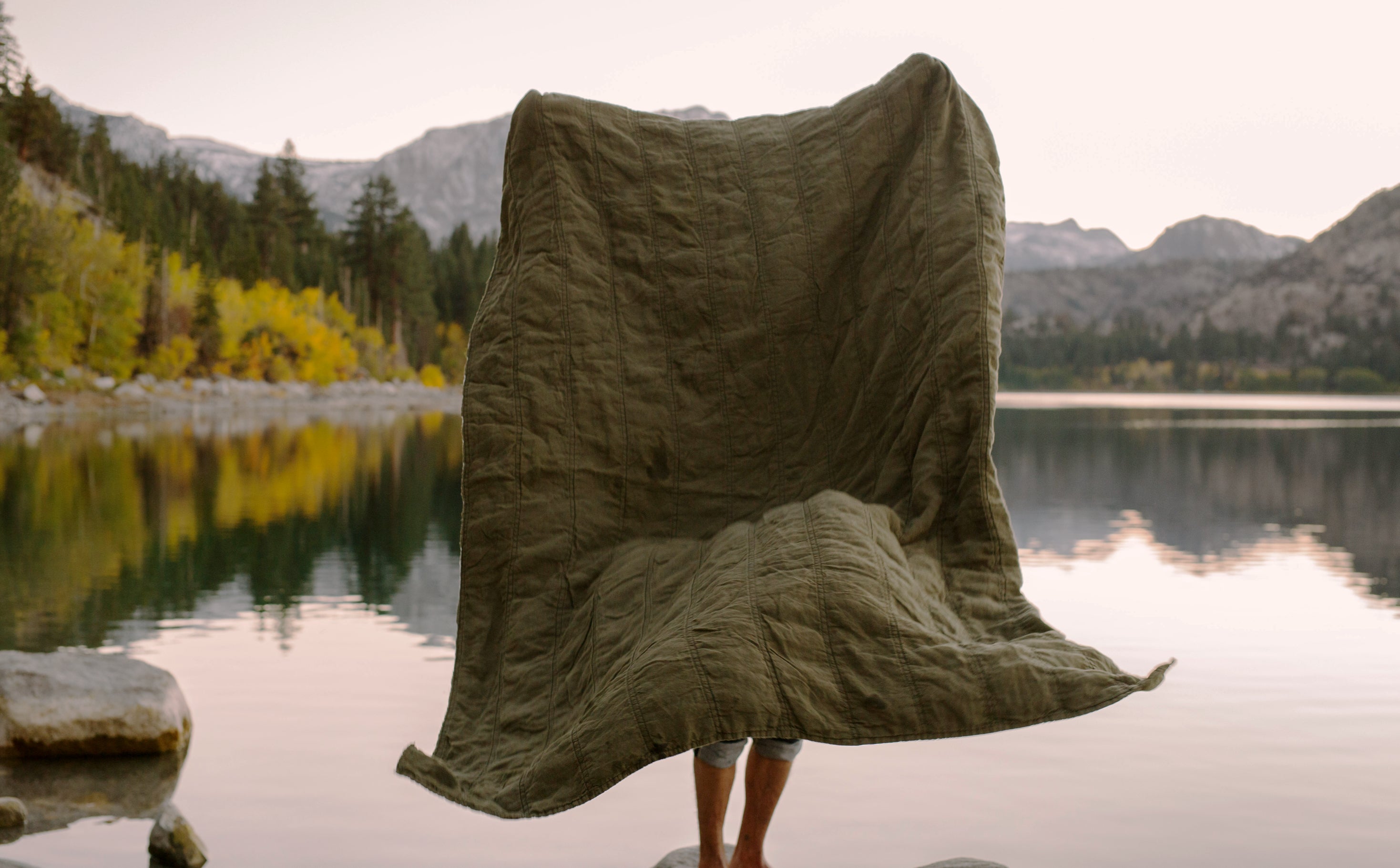Story by Diana Keeler / Photography by Ashley Turner, @ashleyturnerstudio and Richard Rodgers, @03_design

Evenfall is a Portland-based studio founded by designer and textile enthusiast Melissa Miller. Formerly a consultant for a leading hemp brand that pioneered the use of the carbon-negative plant, Melissa was won over by hemp’s incredible regenerative capabilities, unmatched durability, and soft-to-the-touch fibers, and inspired to create Evenfall, a collection of earth- friendly textiles consciously crafted using 100% hemp.

Hemp is at the center of Evenfall, Melissa Miller’s new collection of beautifully soft, heirloom- quality bedding. “Hemp is an incredibly soft and super durable fabric that’s so much about feeling soft and cozy,” she says. “And I loved how it can feel so rustic.”
The cultivation of hemp began in Asia more than 10,000 years ago in what is now Taiwan and China.
Hemp, she says, is a powerful plant. “What I find most amazing about hemp is the phytoremediation process,” she says. “Hemp is often planted in toxic environments. The roots are as deep as the plant is tall — about eight feet — and they’re able to absorb toxic materials like heavy metals. The plant actually neutralizes those toxic chemicals.” (Hemp, she notes, was planted near the site of the Chernobyl nuclear disaster in the 1990s; in 2001, a team of German scientists produced evidence that hemp was able to extract lead, cadmium, and nickel from polluted earth.)

Evenfall quilted throws are woven from 100% sustainable hemp and garment dyed with low impact dyes in Portugal by fourth-generation textile experts.
Within the home bedding space, hemp is gaining renown not just as a well-intentioned sustainable product but a durable, beautiful fiber suitable for exceptional goods. These days, Miller says, consumers have moved past now-outdated ideas of what constitutes luxury bedding — the 1000-count sheets, made from premium Egyptian cotton, that ruled luxury home stores in years past.
Now her work primarily consists of educating buyers on the differences between linen and hemp. “I do think the customer has been taught more recently that thread count really isn't the end-all, be-all,” she says, noting that many big brands have been making “big statements” in linen bedding. “Hemp bedding is similar to linen bedding,” she says. “For good or bad, I'll say one of the challenges is that not everybody has the best experience with linen. People sometimes think of it as a little scratchy, and it can wear out.

Evenfall quilted throws are stitched to create simple patterns and pre-washed for extra softness.
The difference is hemp has a silkier feel than linen, partly because the fibers are two to three times as long. They’re similar in the sense that they're both hollow, which makes them great insulators, and the way they’re woven will make them breathable, but hemp really does have a better hand-feel, and it lasts much longer. There's a little work for me to do on that part because there's a lot of association with linen — in some ways it’s the same, but in other ways, it’s much improved.”
– Melissa Miller, Founder Evenfall
Hemp is the crucial, sustainable element in Evenfall’s production process: It’s carbon negative, meaning that it takes more carbon out of the air than is released as it’s harvested. Compared to cotton, hemp requires less water and other resources. But hemp isn’t the only area of focus. Working closely with her vendors in Portugal, Miller was able to reduce the long-accepted use of single-use plastics when shipping her goods, a custom long ago enshrined in most businesses' best-practices handbooks.

“In working with my vendors, I requested that there would be as little as possible use of single- use plastics in the production, in the product development process, and in shipping,” she says. “For many companies, when you ship from overseas — however [the product] might show up in the stores, a lot of times, every single individual unit is shipped in its own plastic bag on the way here. We really worked to change that — I think everyone associates that with risk, when there’s not this protective element on every single unit. But we looked for ways to eliminate that waste and essentially eliminate single-use plastics almost entirely.”
Pictured: Inspired by the hues of dawn, the Daybreak Quilted Throw in terra cotta is stitched with a variegated and intersecting pattern that gives the quilt extra texture.
Beyond these negotiations was a simple desire to make a lasting, durable good — to create quilts that will be passed from one generation to the next, instead of used (briefly) until the piece falls apart. “I'm committed to natural fiber and figuring out ways to use them that give you a really durable product,” she says. “The most sustainable item will always be the one that you don't have to replace.”




















